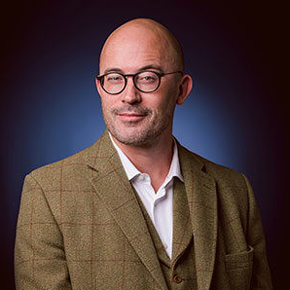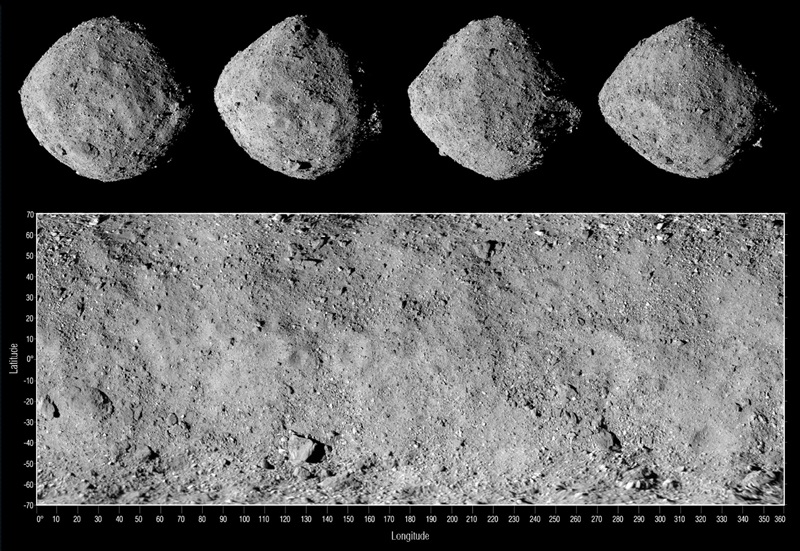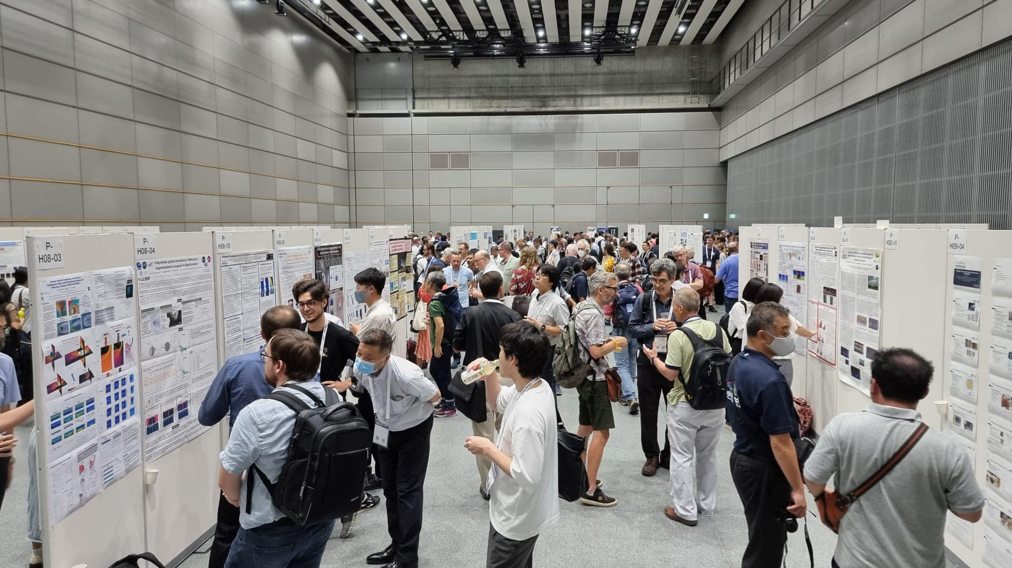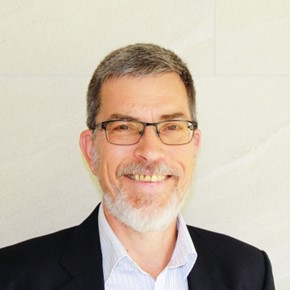
Contribute to the Space and Radio Science newsletter
If you would like to list your event or opportunity, or otherwise contribute to the next edition of the Space and Radio Science newsletter, please send content to isc@science.org.au. Contributions will be published subject to approval by the National Committee for Space and Radio Science.
Subscribe
The National Committee provides this regular emailed newsletter containing updates from international scientific unions and committees and news related to the local scientific community, relevant funding opportunities, conferences and awards.

Professor Phil Bland, Chair, National Committee for Space and Radio Science
I’d like to begin this newsletter by thanking Professor Fred Menk, our previous Chair. Fred served as Chair for five years and was the driving force behind ‘Australia in Space: A decadal plan for Australian space science’. This heroic has put the National Committee for Space and Radio Science (NCSRS) and the community on a firm foundation in defining a way forward. Fred has agreed to stay as an observer. He has already been a huge help to me, and I am very grateful for his advice and insight.
The Australian Academy of Science is reviewing the current structure and remit of its National Committees. My colleagues on the NCSRS are engaging with this process, using it as an opportunity to update our terms of reference and clarify our remit for external stakeholders.
Two international observers have been added to the Committee: Dr Ben Bussey, Chief Scientist for Intuitive Machines, and Dr Barbara Cohen, planetary scientist at NASA Goddard Space Flight Centre. Dr Cohen was the principal investigator for Lunar Flashlight and was recently chosen to be the lead scientist for Artemis IV. Dr Bussey has experience across the US space ecosystem. Prior to Intuitive Machines, his most recent role was at Johns Hopkins University as the team lead supporting NASA’s Space Technology Mission Directorate’s Lunar Surface Innovation Initiative. At NASA, Dr Bussey served as chief exploration scientist in NASA’s Human Exploration and Operations Mission Directorate, and then as deputy associate administrator of exploration in NASA’s Science Mission Directorate. We welcome them both and the experience they can bring to the Committee.
I’d like to thank the organisers of the Australian Space Research Conference for allowing me to present an overview of ‘Australia in Space: A decadal plan for Australian space science’. The Academy synthesised input from all constituencies within Australia's space research community, and set out a strategic vision for space science and exploration for the next decade. I encourage all colleagues in the sector—whether in academia, industry, or government—to make themselves familiar with its recommendations.
The decadal plan has three headline recommendations and six supporting recommendations. One headline recommendation is a commitment to an ongoing national space program enabled by space missions that advance science, stimulate innovation, and inspire citizens. One focused supporting recommendation is for a program of small space missions to advance knowledge and discovery. It is the judgment of the NCSRS that delivering on these recommendations would advance (to one degree or another) all other elements of the decadal plan. Our focus and messaging then are around the establishment of a national space program centred around science-driven missions. This targeted approach was aired at the Australian Space Research Conference and was positively received by the community. A program supporting high-value science—whether with small Australia-led missions, Australian-built payloads on missions led by other agencies, or funding for detailed reviews supporting larger missions—is the goal. The Australian Research Council is currently the only option in Australia for researchers that want to pursue space science, or spacecraft engineering in the service of science. This has to change.
Recent cuts to the budget of the Australian Space Agency, and the decision by the Australian Government to cancel the National Space Mission for Earth Observation (NSMEO), were disappointing. Regarding NSMEO, it is the default policy of the Australian Academy of Science to defer to the relevant National Committee when responding to policy changes that impact a specific community. The Academy heard our argument that the scale of this decision (cancellation of a $1.2 billion mission), with its impact on science communities far outside the NCSRS remit, warranted an Academy-level statement. The President of the Academy of Science, Professor Chennupati Jagadish AC, followed this with a letter to the Hon Ed Husic MP, Minister for Industry and Science. The Academy’s Science Policy team has been supporting us, engaging with the Australian Government in making the case for space science. Given the position of the previous government, which defined a remit for the Australian Space Agency that excluded science, a mission program founded on science would be a fresh start. Given the fact that the NASA program is founded on science, engagement with our alliance partners would be facilitated by a program that speaks to their priorities.
I had a wonderful time at the Australian Space Research Conference, my first as Chair of the National Committee. Thank you to the organisers and to the University of Tasmania for hosting. The next conference will be in Perth. I encourage colleagues from all areas within our community to attend. It is a conference that policymakers engage with. Presenting those policymakers with the physical evidence of the large, world-class research community that exists in Australia, helps the Academy make the case for increased support from government.
It's been an eventful few months, but I believe that we are on a path that will see the Government recognise the value of what our community brings to the national conversation in space, and the space sector, and make a case for a mission program at the ministerial level. Engagement by the Academy has helped put us there. I would like to thank all of my colleagues at the Academy, and the NCSRS, for their support. Watch this space (J) for updates.
The Committee has been developing an implementation plan to accompany the decadal plan for space science that was launched in January 2022. The intention is for the implementation plan to outline key goals, strategies and responsibilities for realising the recommendations in the decadal plan. This process is being informed by community and stakeholder consultation.
The 45th Committee on Space Research Scientific Assembly (COSPAR 2024) early bird registration is now open. Register now to secure your spot and join leading space science researchers from around the world.
Register for COSPAR 2024 here.
The International Conference on Astronomy and Space Sciences (ICASS) is being held 2–3 December 2023 in Sydney, Australia.
More information on ICASS here.
The Academy released a statement in response to recent developments concerning cuts to the Australian space program amounting to $1.2 billion.
18 August 2023—The Space (Launches and Returns) (General) Rules 2019 and the Space (Launches and Returns) (High Power Rocket) Rules 2019 have been amended.
More details on these changes.
17 October 2023—Conflux Technology is taking world-class heat exchange systems to the global space market.
More details on this exciting venture.
23 October 2023—Western Australia has moved a step closer to becoming the go-to hub for space operations and exploration in the Southern Hemisphere and supporting NASA’s return to the Moon.
5 September 2023—The Australian Space Agency, in partnership with NASA, is working with Australia’s space industry to design and build an Australian-made rover. It’s part of the Trailblazer program under the Moon to Mars initiative.
More details on the competition to name Australia’s rover.
24 September 2023—NASA’s OSIRIS-REx spacecraft has returned to Earth with samples collected from asteroid Bennu.
More details on the OSIRIS-Rex mission.
Highlights

Seeking volunteers to join the Women in Space Chapter (WiSC)!
Are you passionate about gender equality in the space community? We are actively seeking dedicated volunteers to join the executive committee of the Women in Space Chapter (WiSC). Together, we are championing women's participation and leadership in the space community.
Greetings,
I am Dr Lily Qiao, the President of WiSC. Currently, we have three volunteers on our WiSC executive committee, and we're eager to welcome new members to our team. Presently, we have openings for two crucial positions:
Join WiSC at no cost and become a part of our mission. To express your interest, please reach out to Dr Lily Qiao at l.qiao@adfa.edu.au. Let's unite in our pursuit of the stars!
Join us and be a part of the WiSC team. Your contribution can make a significant impact on the future of women in the space industry.
COSPAR is pleased to launch a new program that will build SmallSat capacity in developing countries. President of COSPAR, Professor Pascale Ehrenfreund said, “I am pleased to welcome this initiative, as it fulfils several of COSPAR’s founding principles of promoting scientific space research at an international level, open to all scientists; promoting diversity and gender equality in all of its activities; and encouraging meaningful roles for younger scientists, who are the real future of international space research.
Find out more about the new COSPAR program.
Recently or soon-to-be published/free to read:
Read in Advances in Space Research.
New/open calls for papers for special issues of ASR:
SCOSTEP/PRESTO hosts an online lecture series. These lectures cover a range of topics in solar-terrestrial physics.
Details and lecture recordings.
SCOSTEP Visiting Scholar Program: opportunities for graduate students! This program offers training in solar-terrestrial physics laboratories for 1–3 months. Open to applicants worldwide, with a focus on developing countries. Master's and PhD students can apply.
Further details about the Visiting Scholar Program.
SCOSTEP partners with other international bodies to train university students to become next-generation scientists via International Space Science Schools and Workshops.
More information about schools and workshops.
The URSI General Assembly and Scientific Symposium was held in Sapporo, Japan, in August 2023 with Dr Trevor Harris as Australia’s representative.
It is the premier international radio science meeting, hosted by the Japan National Committee of URSI (JNC-URSI). The meeting occurs every three years and is the biggest event on the URSI calendar, sponsored by:
Many other supporters are listed in the program book.
The conference, held 19–26 August, was well attended and a great success with more than 1,000 papers. The plenary talks were of high quality.
Find out more about the event.

Emeritus Professor Frederick Menk

Space activities are essential to our way of life. They advance understanding of the Earth, the universe, and humanity; underpin national security; enable our economy; provide critical data, products and services which drive innovation; help us manage our environment and resources; inspire STEM engagement; and project national endeavour. Access to and use of space is a vital national interest.
Australia’s space policy to date has focused mostly on strategic partnerships, geographic advantages, and niche opportunities for industry, relying on others to supply our core space requirements. In effect, we sit in the passenger seat, hoping the driver can take us where and when needed and at reasonable cost. Meanwhile, disruptive changes amplify challenges and opportunities.
Space is humanity’s most significant global common. The solar system is unimaginably vast and mostly unexplored. Key science questions range from the origins and sustainability of life on Earth and other planets, to the causes and impacts of solar variability. Science-driven discovery underpins innovation, technological development, and applications. However, science-focused activities are not within the remit of the Australian Space Agency or the SmartSat CRC, while CSIRO is not a funding agency.
While government initiatives, including activities of the Australian Space Agency, have been important stimulators of the space industry sector, the space R&D capabilities necessary for a sustainable national space ecosystem have not been enabled.
The primary reason is the lack of commitment to a coherent ongoing national space strategy. Instead, numerous poorly aligned organisational strategies, disjointed and inadequate funding schemes, and workforce constraints limit Australia’s ability to contribute to international space partnerships.
Our aim should be sovereign space science capability for national and international benefit.
Australian research groups are capable of developing and operating innovative payloads or entire small satellites, and developing downstream products, engaging students, collaborators, and small- and medium-sized enterprises. Our small research ecosystem encourages cross-fertilisation across adjacent disciplines, such as space, radio, astronomical, geospatial and geophysical sciences, as well as robotics, electronic and computer engineering, and additive manufacturing.
There is much we could achieve. An incomplete list could include: a national Earth observation program (natural hazards, water and air quality, land management, forecasting, Antarctic environment, surveillance) using small satellites with smart miniature sensors and user-friendly products; rideshare payloads and small satellites to the Moon and eventually Mars to address key science questions and provide essential services; high-energy astronomy from Earth orbit and very low-frequency radio astronomy from the Earth-Moon L2 point; sample return missions from asteroids and other objects; in-orbit experiments on food production, radiation shielding and propulsion systems; ground station support for international science missions using phased array antennas and optical links; space weather forecasting using distributed sensors on the ground and in space to inform operational models.
So, what might a national space policy look like? It could be framed around core objectives, such as:
1. (a) Assuring national security and regional stability
(b) Effectively supporting international partnerships and collaborations
2. (a) Assuring access to space-derived data, products and services
(b) Supporting economic, social, and environmental resilience in the face of grand challenges
3. (a) Advancing scientific discovery and innovation
(b) Growing economic complexity and competitiveness.
© 2025 Australian Academy of Science